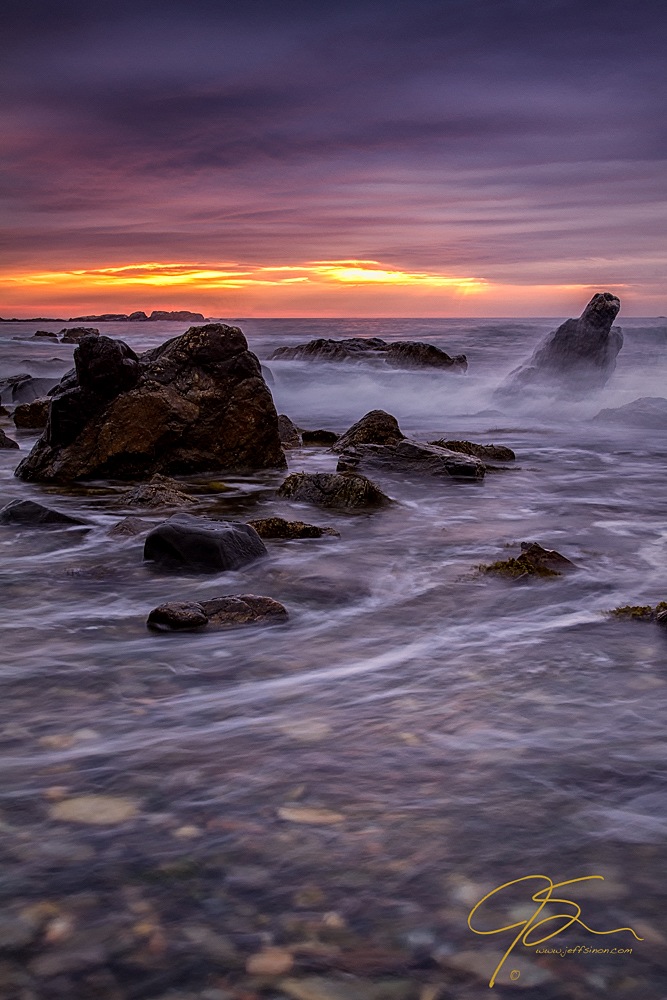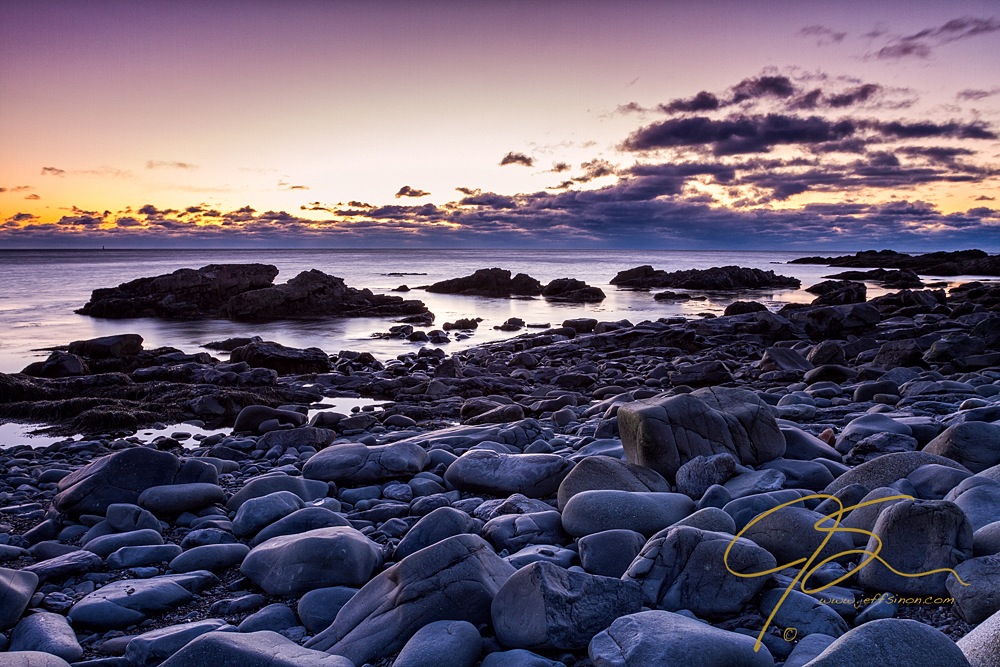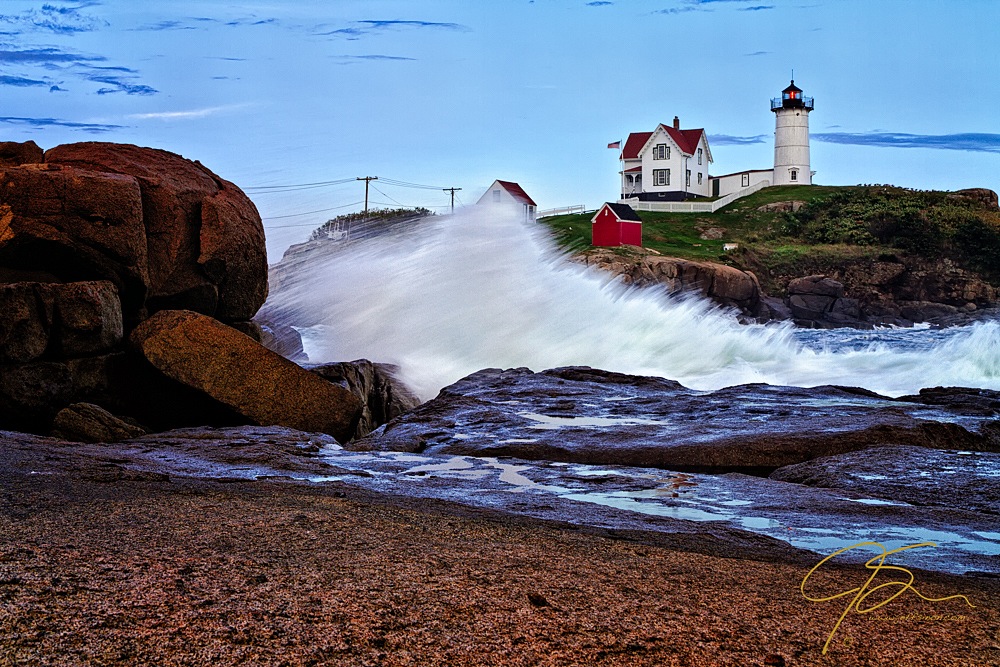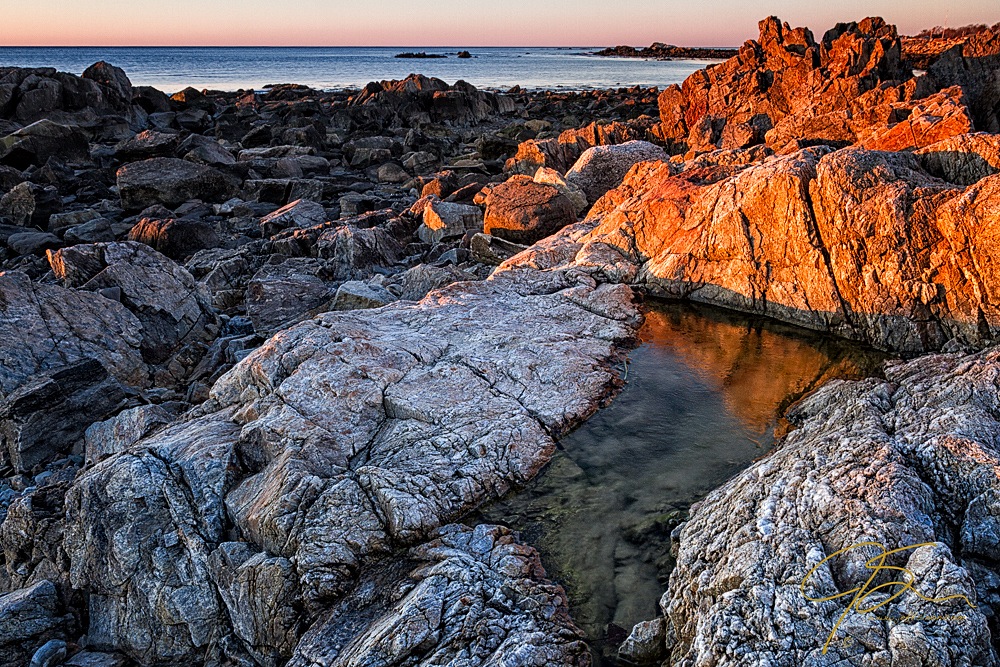As autumn fades and before snow covers the landscape my attention is drawn to the sea. From rocky shorelines to sandy beaches, I love photographing seascapes, especially during the golden hours around sunrise (maybe sunset for those of you on the west coast). Witnessing the first light of day as the sun peeks above the horizon is some of the most magical light you’ll find. Add to that the power of the sea and you have the makings of some truly spectacular photography.

Fortunately, where I live in New Hampshire I’m within an hour’s drive of the Atlantic coast. And while the New Hampshire seacoast may be relatively short, only 13 miles long, there is a wealth of possibilities to be found and photographed.
What to look for when photographing seascapes

Rocks and waves
One of the things I like the most about the New England seacoast, especially in New Hampshire and southern Maine where I do most of my seascape photography, is that there is a lot of rocky shoreline.
Nice sandy beaches are all well and good for a warm relaxing day in the sun, but one of the things that creates the never ending possibilities I mention above, are the rocks. Lots and lots of rocks.

A person could photograph the same short stretch of coastline every day for a month and never make the same photo twice. With the exception of a relative few photos, like the one below captured in Ogunquit, Maine, the majority of my seascapes have been photographed along a few short sections of the New Hampshire coast totaling less than a mile in length.

I don’t only photograph on or near the rocks, just most of the time. Sometimes the simplicity of golden light reflecting off of wet sand and a breaking wave is all you need.

Weather makes the photo
Most of my seascapes are planned around the weather. If I’m planning to head to the coast I’ll watch the weather forecast closely. What I want, and what I often gamble on, is a storm front and the associated clouds, passing out to sea around sunrise. What I’m betting on is the sun either rising above the horizon before the clouds block it out, or at least having it find a break in the clouds so they can be lit from below, which can make them look like they’re on fire.

The great clouds, though I wish there were more of them, are one of the things that makes the above photo for me. On a nice clear morning this would have been a much different, and quite boring, photo.

Storms that have passed far out to sea, and the great big waves they cause, can be great for your photos.
However, you need to be very cautious when photographing them. The sea can be very unforgiving if you get too close and an unexpected waves hits you. Even if the wave doesn’t hurt you, if your camera takes a good dunk in salt water you can plan on buying a new one, because there’s no coming back from that.
One thing I always do when I get home after a day at the coast is to wipe my camera down with a damp rag or paper towel in order to get any salt spray off. The long-term effects of even a little salt water left too long can be the end of your camera.
Use filters
At sunrise, or at sunset, the foreground will often be much darker than the sky. Here you have several choices of solutions. You can blend multiple exposures, use HDR, or use a Graduated Neutral Density (GND) filter to achieve a balanced exposure in one frame. I prefer the later simply because I want to spend the least amount of time possible when it comes to post-processing.
GND filters come in two main types, hard edge and soft edge, and they also come in varying darkness levels measured in stops of light. Hard edge filters have a more defined, less gradual transition from the clear bottom half to the dark upper half, and they’re perfect for photographing seascapes where the horizon is usually a well-defined line.
Use a tripod
The best light is either early or late day light, which is also often low light. Low light means long exposures, and if you want that nice silky look to your waves, you need to have the camera perfectly still while the shutter is open. This means you’ll want to use a tripod.
 Look away
Look away
From the ocean that is. Though I will rarely head to the coast for a sunrise shoot if there aren’t any clouds in the sky, sometimes the weatherman is wrong. So, if you find yourself at the coast and sunrise or set is turning out kind of blah, just look away. I mean it, turn around, put your back to the sun, and you might just find the golden light from the sun doing some pretty great things to the surrounding landscape.

More about safety
Those rocks I’m so fond of can be treacherous! I often describe walking these often wet and seaweed covered rocks as being like walking on greased bowling balls while wearing roller skates. I’ve watched several friends go down hard, so be careful.
Watch the tide. When the tide is at dead low you can likely get out on areas that are normally under or surrounded by water at high tide. You don’t want to get so wrapped up in photographing that you find yourself stranded and have to either wait out the tide or get wet wading back to shore. I haven’t had to wait out the tide yet, but I have gotten much wetter that I had intended because I didn’t pay close enough attention the the incoming tide. I won’t make that mistake again.
[box type=”shadow”]
Master techniques to capture the coast in awe-inspiring images! Learn new skills in with pro photographer Kurt Budliger as your guide in Bluprint’s Photographing Coastal Landscapes class.

Share tips, start a discussion or ask one of our experts or other students a question.
No Responses to “Where Land and Sea Collide: Photographing Seascapes”